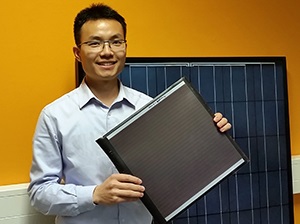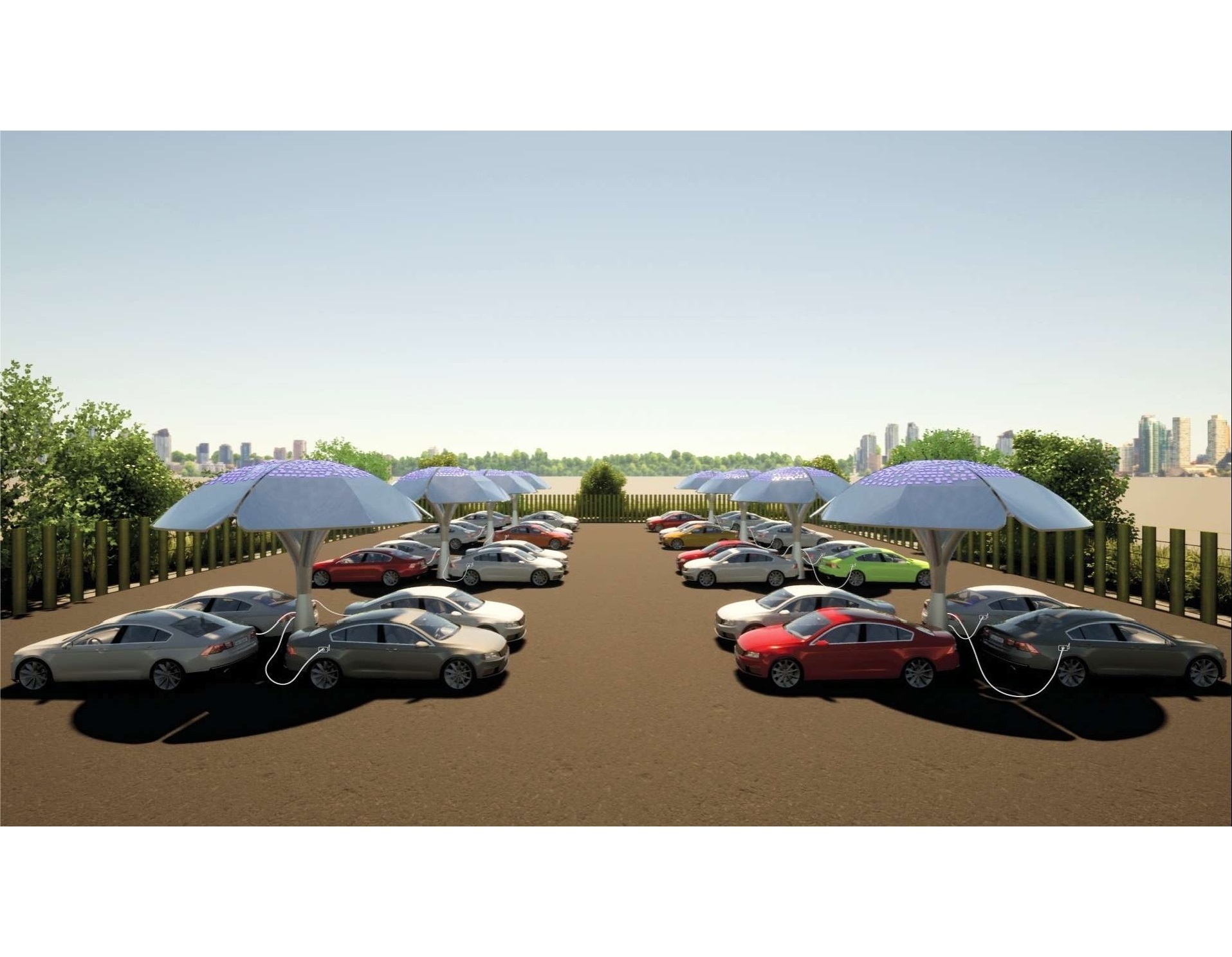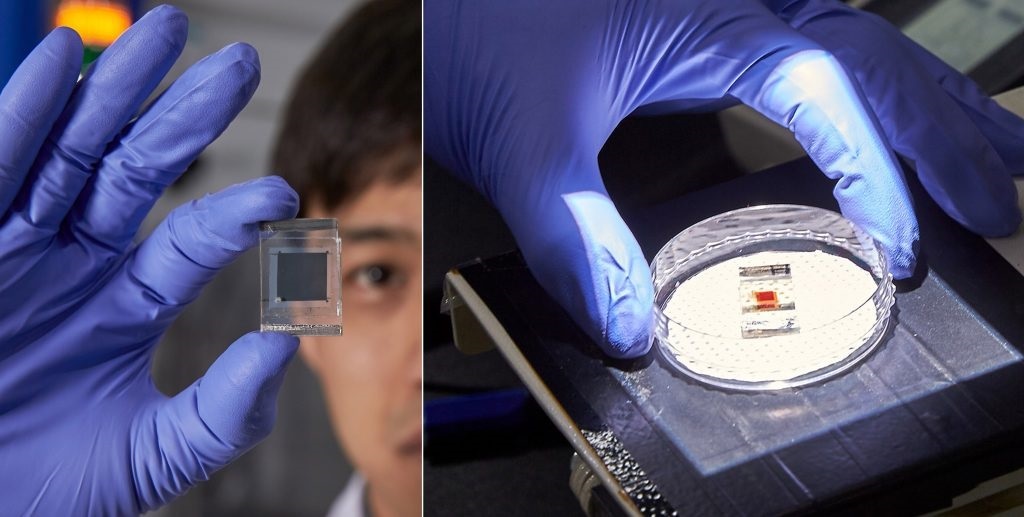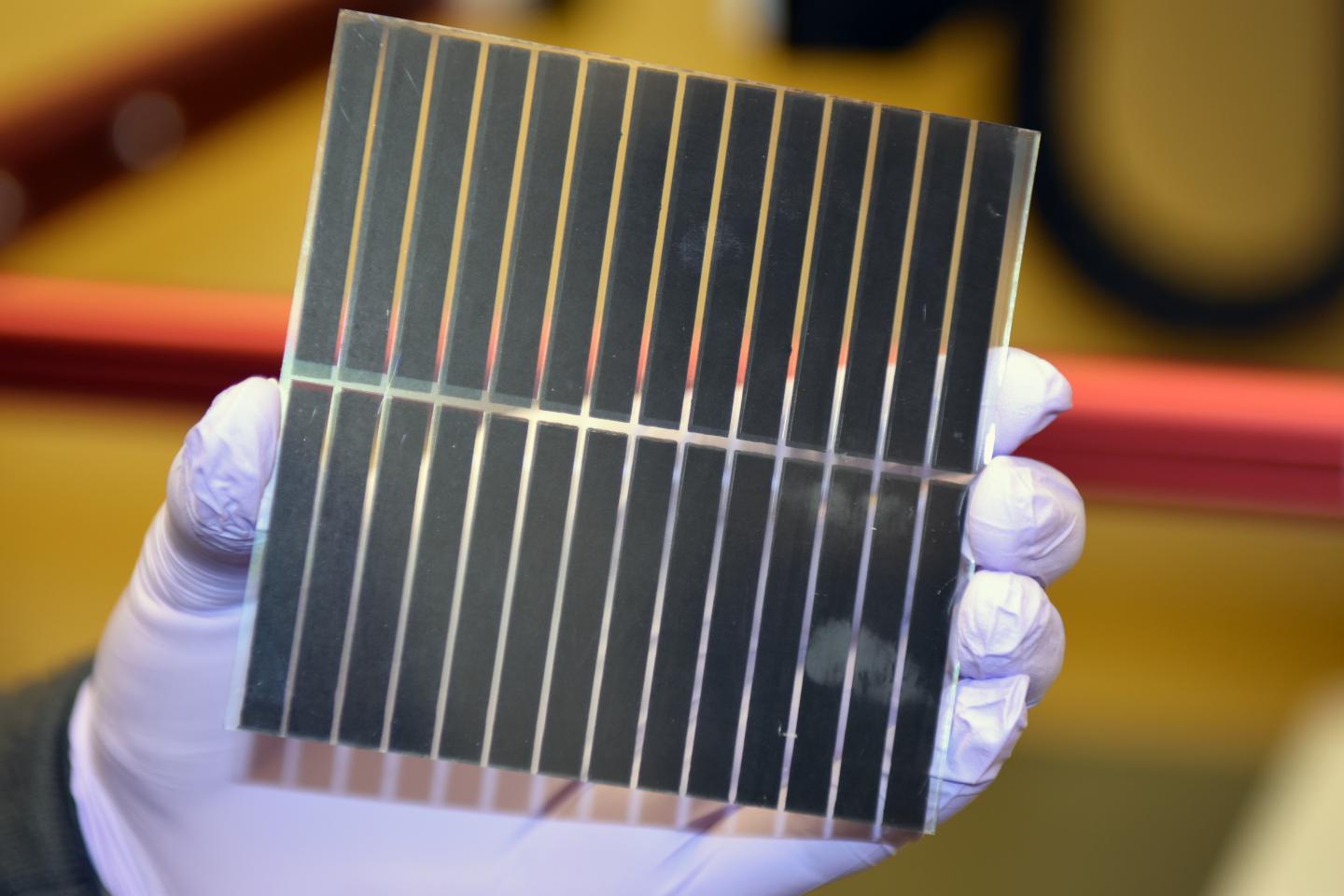25 September 2015
Thin-film silicon solar cells are one of the promising photovoltaic (PV) technologies owing to the earth-abundance of raw materials for producing them. It is a cheap and, when using flexible solar modules, also a light-weight PV technology. Today, Friday 25 September, Hairen Tan was awarded his PhD with distinction (cum laude) on new materials and light management schemes for producing high-efficiency thin-film silicon solar cells at the Faculty of Electrical Engineering at TU Delft.
The challenge for thin-film solar cells is that the absorber material is so thin that much light can be lost by passing through the material without being absorbed. By using photon management – light trapping – the optical thickness and light absorption of the solar cell is increased. Light trapping means that light is travelling as long as possible in the absorber layer of the cell. Tan has developed and applied various innovative high performing light trapping techniques, such as plasmonics and modulated surface textures, that have resulted in record solar-to-electricity conversion efficiencies of the thin film silicon-based solar cells.
Plasmonics
Light trapping by plasmonic nanoparticles has the potential to outperform the conventional light trapping methods. Hairen Tan developed an easily up-scalable process which can be used to create nanoparticles with the ideal size, shape and surface. He integrated the silver nanoparticles at the back of the solar cell, guiding light back into the solar cell to generate more power. Hairen Tan demonstrated that the performance of thin-film solar cells with nanoparticles can be as good as – and potentially much better than – solar cells with conventional ways of light trapping.
Modulated surface textures
Hairen Tan designed a novel surface morphology of a substrate for tandem solar cells in order to scatter and absorb light more efficiently in both sub-cells. In this modulated surface texture approach, Tan combined micrometre large surface features obtained by etching a glass substrate with nano-scale features of a transparent electrode deposited on the etched glass. A great advantage of this textured substrate in contrast to conventional textured substrates is, that it allows to deposit high-quality silicon films on top of it resulting in record performing solar cells.
Record multijunction solar cells
Tan cooperated with the EPFL PV Laboratory in Neuchatel, Switzerland, to apply the highly transparent modulated surface textured electrodes in thin-film silicon solar cells to minimize the optical losses outside the absorbers. A world record initial efficiency of 14.8% has been achieved in tandem thin-film silicon solar cells. Tan also collaborated with prof. Rene Janssen at Eindhoven University of Technology to make ultra-thin hybrid amorphous silicon and polymer multijunction solar cells. In this new concept, a record high efficiency of 13.2% was reached, which is higher than the best-performing all-polymer-based solar cells.
Sustainable Energy
Tan gained his PhD with honour on Friday 25 September for his thesis “Materials and Light Management for High-Efficiency Thin-Film Silicon Solar Cells”. He carried out his research in the Photovoltaic Materials and Devices group, supervised by prof. dr. Miro Zeman and dr. Arno Smets. Tan has been honoured the Young Researcher Award in 2014 on the 6th World Conference on Photovoltaic Energy Conversion in Kyoto, Japan, to credit his contribution to the development of high-efficiency thin-film silicon solar cells. In 2013 Tan received the Chinese Government Award for Outstanding Self-financed Students Abroad. He spent three months of during his PhD research at the PVLab of EPFL in Switzerland. His project was funded by the STW VIDI-grant of A. Smets.















